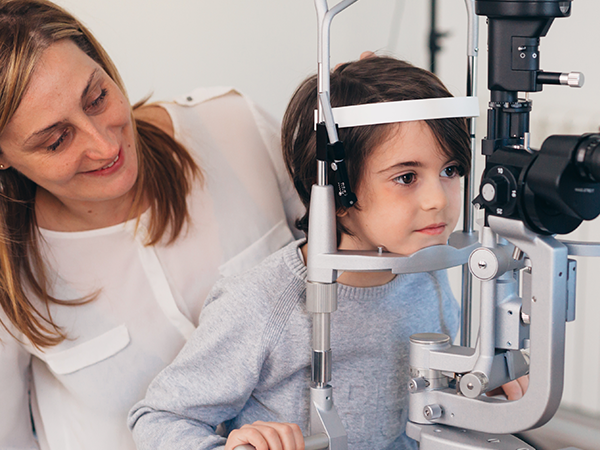
In the digital age, our reliance on electronic devices has become an integral part of our daily lives. From smartphones and tablets to computers and television screens, we spend a significant portion of our time staring at digital displays. However, this constant exposure to digital screens has raised concerns about its impact on our eye health, particularly the potential link between digital devices and myopia (nearsightedness).
Myopia, a condition in which objects at a distance appear blurred, has been on the rise globally, and researchers have identified various factors contributing to its development, including genetics, environmental influences, and lifestyle habits. One of the key lifestyle factors that has gained attention is the excessive use of digital devices, especially among children and young adults.
The Impact of Digital Devices on Eye Health
Beyond the potential link to myopia, the excessive use of digital devices can also have other detrimental effects on eye health. One of the most common issues associated with prolonged screen time is digital eye strain, also known as computer vision syndrome (CVS).
Digital eye strain can manifest in various symptoms, including:
- Dry eyes
- Eye fatigue
- Headaches
- Blurred vision
- Neck and shoulder pain
These symptoms can be exacerbated by factors such as poor lighting conditions, glare on the screen, improper viewing distances, and prolonged periods of screen use without adequate breaks.
Furthermore, the blue light emitted by digital screens has been a subject of concern. While the potential long-term effects of blue light exposure are still being studied, some research suggests that it may contribute to eye strain, disrupt sleep patterns, and potentially increase the risk of age-related macular degeneration (AMD) over time.
Common Symptoms of Screen-Related Eye Strain
If you spend a significant amount of time using digital devices, it's crucial to be aware of the common symptoms of screen-related eye strain. These symptoms can vary in severity and may include:
- Eye discomfort or fatigue
- Dry, burning, or itchy eyes
- Headaches or eye strain
- Blurred or double vision
- Neck, shoulder, or back pain
It's essential to recognize these symptoms early and take proactive steps to alleviate them, as prolonged eye strain can lead to more severe eye health issues.
Strategies for Reducing Eye Strain from Digital Devices
While the use of digital devices is often unavoidable in our modern lives, there are several strategies you can implement to reduce the risk of eye strain and protect your eye health:
- Adjust your screen settings: Adjust the brightness, contrast, and text size on your digital devices to a comfortable level. Consider using night mode or blue light filter settings to reduce the amount of blue light emitted by the screen.
- Blink regularly: Conscious blinking can help keep your eyes lubricated and prevent dryness. Make a conscious effort to blink more frequently while using digital devices.
- Maintain proper posture and ergonomics: Ensure that your workstation or device setup promotes good posture and ergonomics. Keep your screen at a comfortable viewing distance and adjust the height and angle to minimize neck and eye strain.
- Take frequent breaks: Periodically step away from your digital devices and engage in activities that don't involve screen time. This can help reduce eye strain and promote overall well-being.
- Use proper lighting: Adjust the lighting in your environment to reduce glare and reflections on your screen. Consider using task lighting or positioning your screen perpendicular to windows.
- Consider computer glasses or anti-reflective coatings: Computer glasses or anti-reflective coatings on your regular glasses can help reduce glare and eye strain while using digital devices.
The Importance of Regular Eye Exams
In addition to implementing strategies to reduce eye strain, it's crucial to prioritize regular eye exams. Professional eye care providers can assess your vision, detect any underlying eye conditions, and provide personalized recommendations for maintaining optimal eye health.
During an eye exam, your eye care professional may perform various tests, including:
- Visual acuity tests
- Refraction tests to determine the need for corrective lenses
- Eye muscle coordination and binocular vision tests
- Eye pressure measurements
- Examination of the internal and external structures of the eye
Regular eye exams are particularly important for individuals who spend a significant amount of time using digital devices, as they can help identify and address any vision-related issues early on.
If you experience persistent eye strain, blurred vision, or other vision-related concerns, it's essential to schedule an appointment with an eye care professional. Don't hesitate to prioritize your eye health and seek professional guidance to ensure optimal vision and overall well-being.
Schedule Your Comprehensive Eye Exam with GrandView Eyecare Today
In the digital age, the excessive use of digital devices has become a growing concern for eye health, particularly regarding the potential link between screen time and myopia. While the convenience and necessity of these devices cannot be denied, it's crucial to adopt strategies that mitigate the risks and promote healthy vision.
By prioritizing your eye health and seeking professional guidance, you can enjoy the benefits of digital technology while safeguarding your vision for years to come. Visit GrandView Eyecare at our office in Fairbury or Hebron, Nebraska. Please call (402) 729-6162 or (402) 768-6651 to schedule an eye exam today.







